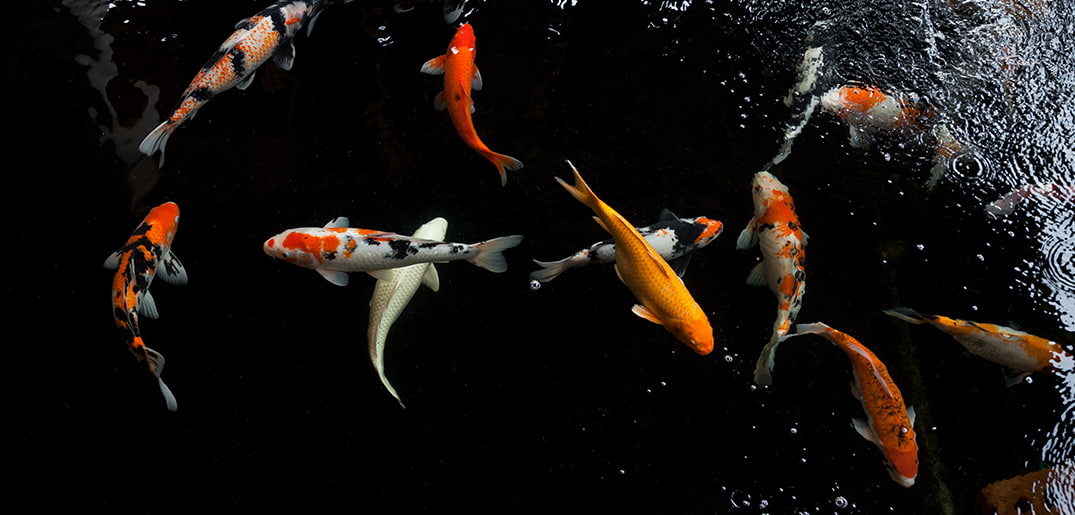It can be exciting to get a fish pond, and finally get to the ultimate objective of selecting the koi, the stars of the show. In fact, it can be easy to go over the top and try to cram as many fish in there as possible, especially as koi fish all have unique designs and look stunning. But there is much more to know and consider before you can bring home a tank full of koi fish. These can go from factors such as size and design, to technical aspects like fish load, water flow rates, pond oxygen levels, type of filtration system, number of aquatic plants, types of plants in the ecosystem, types of food given, feeding schedules, frequency of changing water and ratios, and so much more.
The Basics
In general, two rules of thumb apply to buying koi for your pond. The first is that average water conditions will allow for up to 1 inch of fish per 10 gallons of water, or 100 inches for a 1,000 gallon pond. Second, experts advise to keep at four or under four koi per 1,000 gallons of pond water, so as to enable a healthy environment for the fish to grow and thrive.
Size Of Your Pond
If you already have a pond, you would have little choice but to decide based on the limitations of your current pond size. If the pond is more of a small water feature of 1,000 gallons, be reasonable and don’t expect to keep ten full grown koi in it! If you want a proper koi pond, the pond itself would have to be sizeable, and this would have to be done before getting koi in.
Aside from the total volume of the pond, which is essential also due to its function in dispersing toxins and nitrates, there are also other factors to consider. These include the depth of the pond, to ensure the water does not heat up too quickly in the hot summer months, as well as the layout of the pond which ideally should offer koi fish plenty of depth and horizontal space to swim and exercise.
Type Of Filter System
More koi, more waste, and more work for a filter. If you plan to have many koi, it may be a good idea to get an oversized pond filter, just to have a buffer for when your koi grow bigger. A good type of filter to get would be the kinds that backflush frequently, rather than the ones you have to clean manually every month or quarter. There is also the possibility of adding in line filters to dechlorinate the water, or UV clarifiers to drastically reduce algae reproduction in your pond.
Aeration & Water Flow
Make sure your pond water is always cool and oxygenated, so that your fish can breathe with ease, and also beneficial bacteria is able to grow to deal with toxins in the water. Deeper pools tend to need aeration at the bottom. Generally it is advisable to circulate the water every hour.
With these factors in mind, do ensure you have all the necessary components in place before purchasing your precious koi fish!


 Blog
Blog



